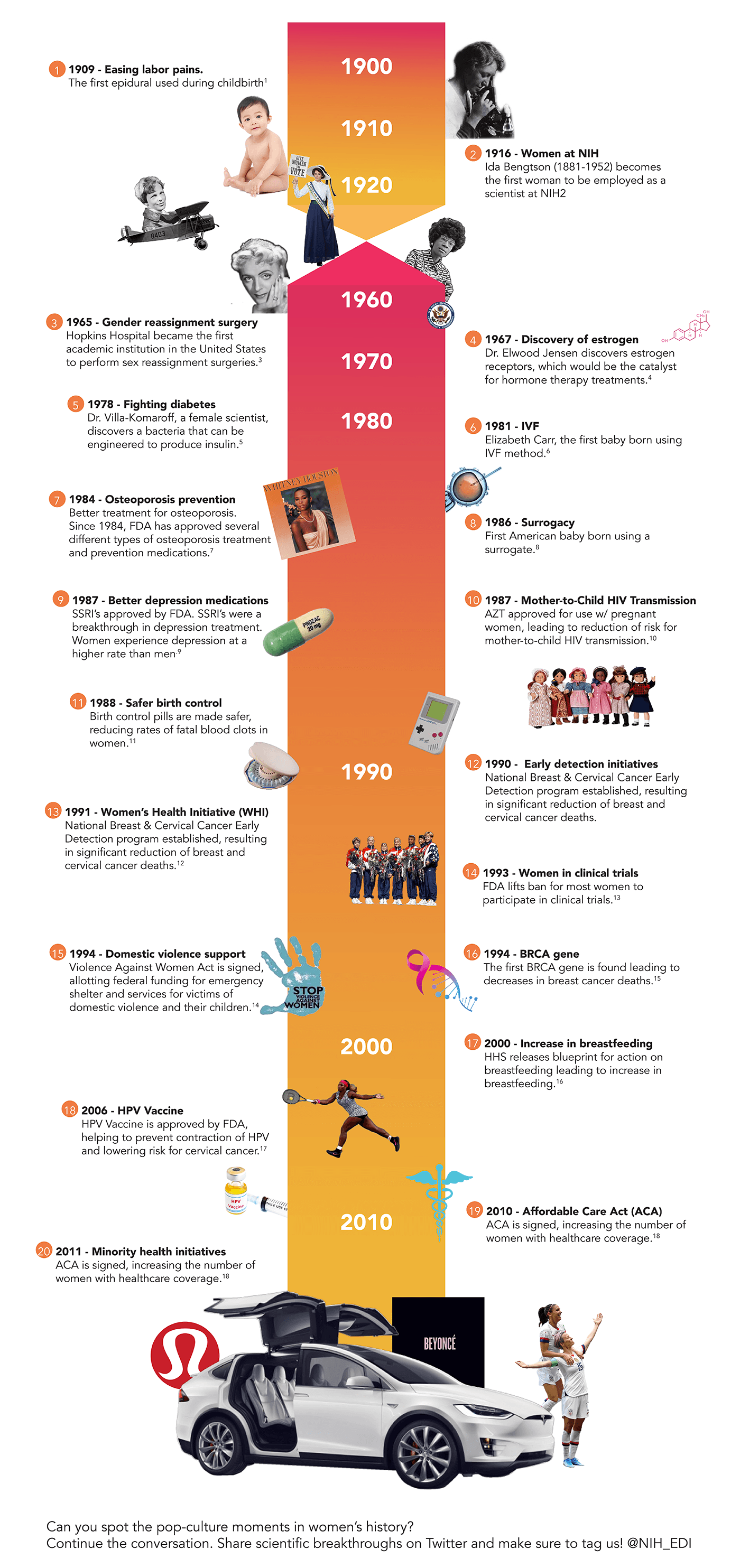20 Scientific Breakthroughs
Benefiting Women
In honor of Women’s History Month, we have compiled a list of 20 scientific breakthroughs benefiting women. From epidural to the BRCA gene, science has made incredible strides in women’s health. Take a look at some of these breakthroughs below.

1909 - Easing labor pains. The first epidural used during childbirth.
1916 - Women at NIH. Ida Bengtson (1881-1952) becomes the first woman to be employed as a scientist at NIH.
1965 - Gender reassignment surgery. Hopkins Hospital became the first academic institution in the United States to perform sex reassignment surgeries.
1967 - Discovery of estrogen. Dr. Elwood Jensen discovers estrogen receptors, which would be the catalyst for hormone therapy treatments.
1978 - Fighting diabetes. Dr. Villa-Komaroff, a female scientist, discovers a bacterium that can be engineered to produce insulin.
1981 – IVF. Elizabeth Carr, the first baby born using IVF.
1984 - Osteoporosis prevention. Better treatment for osteoporosis. Since 1984, FDA has approved several different types of osteoporosis treatment and prevention medications.
1986 – Surrogacy. First American baby born using a surrogate.
1987 - Mother-to-Child HIV Transmission. AZT approved for use w/ pregnant women, leading to reduction of risk for mother-to-child HIV transmission.
1988 - Safer birth control. Birth control pills are made safer, reducing rates of fatal blood clots in women.
1990 - Early Detection Initiatives. National Breast & Cervical Cancer Early Detection program established, resulting in significant reduction of breast and cervical cancer deaths.
1991 - Women’s Health Initiative (WHI). WHI launched by National Heart, Lung, and Blood Institute to better understand how diseases affect post-menopausal women and to reduce the number of women who die from these diseases.
1993 - Women in clinical trials. FDA lifts ban for most women to participate in clinical trials.
1994 – Domestic Violence Support. Violence Against Women Act is signed, allotting federal funding for emergency shelter and services for victims of domestic violence and their children.
1994 - BRCA gene. The first BRCA gene is found leading to decreases in breast cancer deaths.
2000 - Increase in breastfeeding. HHS releases blueprint for action on breastfeeding leading to increase in breastfeeding.
2006 - HPV Vaccine. HPV Vaccine is approved by FDA, helping to prevent contraction of HPV and lowering risk for cervical cancer.
2010 - Affordable Care Act (ACA). ACA is signed, increasing the number of women with healthcare coverage.
2011 - Minority Health. National Partnership for Action Plan campaign launches, helping raise awareness of health disparities for minorities.





